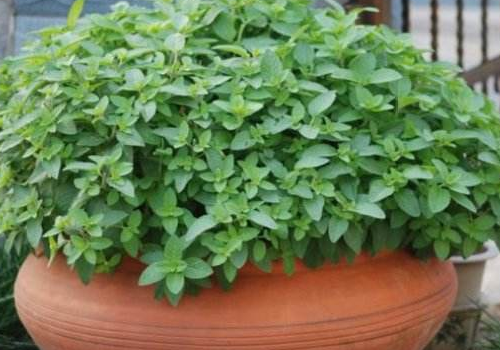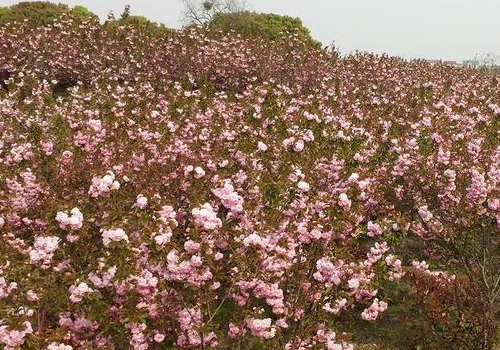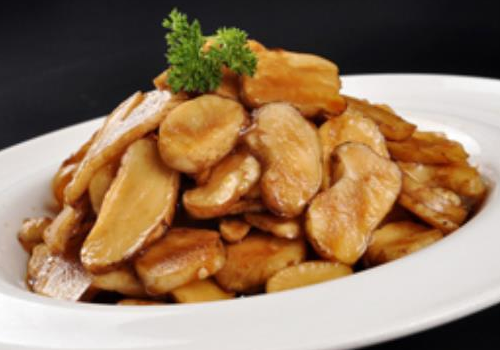What's the difference between mint worm and Schizonepeta tenuifolia?
Peppermint, which is known to many people, has a delicate fragrance, so what about this mint bug? What's the difference between Schizonepeta and Schizonepeta tenuifolia:
What about the mint bug:
1. You can buy flower pesticides to kill aphids.
2. It can be self-made. Tobacco contains nicotine, which has strong contact effect on aphids, red spiders and ants, as well as fumigation and stomach toxicity. Take 20 grams of tobacco powder or cut tobacco, add 500 grams of water to soak for 24 hours, then filter, then add 500 grams of 2% soapy water and spray on the insect-infested leaves. The filtrate can also be sprayed directly on the basin soil and around the basin bottom without soapy water, which can kill pests in the soil.

What's the difference between mint and Schizonepeta tenuifolia:
1. Different nature
Schizonepeta tenuifolia belongs to sexual temperature. it is an herbal medicine often used in our daily life. it can treat fever, headache, vomiting and other diseases. It is also eaten the most in summer. Many friends like the taste of Schizonepeta tenuifolia. No matter noodles or salad dishes are good choices, and it is also a non-toxic herb. Peppermint is a cool herb, which can remove moisture, prevent heatstroke and clear the mind on both sides of the temples. The refreshing mint bath we use in summer contains a lot of mint, which is chilly on the body. Very comfortable.
2. Different tastes
The taste of Schizonepeta tenuifolia is a little bit bitter and spicy, especially when we eat salad and put some minced garlic, that kind of taste is really fresh in my memory, and I can still remember that familiar taste after many years. It is suggested that when eating only the leaves of Schizonepeta tenuifolia do not stem, salad dish is to put some vinegar, mashed garlic can cover the bitterness of Schizonepeta tenuifolia. Many people have eaten peppermint, which tastes a little bitter, but when they put it in their mouth, they feel a cool breath coming out of their throat. it is a rare summer relief treasure. Friends with strong internal fire and easy to get angry can eat more peppermint diet to get rid of the anger caused by excessive anger.
3. The efficacy is different
Schizonepeta tenuifolia has the effect of hemostasis, and sexual temperature, is the object of choice of many postpartum women, postpartum hemorrhage will lead to anemia, hypotension, dizziness, systemic weakness symptoms, eat more Schizonepeta tenuifolia can eliminate these symptoms.
So much for the treatment of mint worms. Now you know how to deal with Schizonepeta tenuifolia.
Do you know which magical flowers and plants are the nemesis of mosquitoes?
The summer is hot and there are many mosquitoes. It is well known that it not only affects people's work, study and sleep, but also spreads diseases such as malaria, Japanese encephalitis, filariasis and dengue fever. How to prevent mosquitoes safely and effectively and spend the summer safely is a practical issue of common concern.
Here are some flowers that can control mosquitoes:
⒈ lavender is a perennial herb or dwarf shrub, although it is called grass, it is actually a purplish blue flower. Lavender tufted, much branched, common for erect growth, plant height according to the variety of 30cm, 45cm, 90cm. The light aroma of the whole plant with a slightly sweet smell of wood is released because the villi on the flowers, leaves and stems all contain oil glands, which are broken by gently touching the oil glands. Its aroma can be eye-catching, comfortable, but also can dispel mosquitoes and flies, can prevent viral and infectious diseases.
Known as Khakibush in Africa, ⒉ marigold is often seen hanging from indigenous huts to drive away swarms of flies. It is also planted between tomatoes, potatoes and roses to prevent mature flowers and fruits from becoming a feast for small nematodes, suggesting that marigold should be an effective insecticide. Marigold belongs to Compositae, annual herb, native to Mexico. Marigold orange flowers are rich in natural lutein, and the pigment has the characteristics of antioxidation, strong stability, non-toxicity and high safety. it is widely used in food, cosmetics, tobacco, medicine and poultry feed, as a natural mosquito repellent plant is very safe.
⒊ peppermint is the representative of aromatic plants. There are many varieties, each of which has a cool fragrance. The Compendium of Materia Medica holds that it is peppermint, cool and non-toxic. The contents of menthol oil and menthol in peppermint were higher when the sunshine was sufficient. If it is a continuous sunny day, put in a sunny place, the leaves become thick, the edge curls and droops, the leaves have blue light, sending out a unique strong aroma, the mosquito repellent effect is the best at this time.
⒋ geranium is widely cultivated all over the world. It is a good flower decorating windowsill and an aromatic insect repellent in the West. Plant height 30CM-60CM, the whole plant covered with fine hairs and glandular hairs, with peculiar smell, mosquitoes are extremely scared. From the user's point of view, it can provide your bedroom like a rose garden temperament, but also provide hormonal regulation, stimulate lymphatic detoxification, and balance skin oil secretion, but also a fragrant insect repellent, economical and romantic atmosphere.
⒌ citronella is a general name of about 55 aromatic plants of Gramineae citronella, also known as citronella, is one of the common vanilla. It is also known as lemon grass because of its lemon aroma. Its smell can ward off mosquitoes and fleas. It has a good effect in treating rheumatism, treating migraine, anti-infection, improving digestive function and deodorizing.
⒍ rosemary flowers and leaves can extract antioxidants and rosemary essential oils with excellent antioxidants. Rosemary antioxidants. It is widely used in medicine, fried food, oil-rich food and all kinds of oil, while rosemary essence is used in spices, air fresheners, ant repellents, germicidal, insecticidal and other daily chemical industries.
⒎ patchouli has a bactericidal function. A leaf in the mouth can remove halitosis, prevent infectious diseases, and can be used as a preservative.
Because patchouli itself is a kind of fragrant plant, mosquitoes are most afraid of this taste. Boiled porridge or tea with patchouli in summer is effective for severe summer dampness, spleen and stomach dampness, abdominal distension, physical sleepiness, nausea and vomiting.
⒏ cat mint, formerly known as Schizonepeta tenuifolia, alias: camphor grass, cold mint, balsam, mint, mint, fennel, Schizonepeta tenuifolia, Schizonepeta tenuifolia, Elsholtzia splendens, feline mint, Latin name: Nepeta cataria L. Labiatae, Schizonepeta tenuifolia perennial erect herbs, cat mint smell mosquitoes do not like to smell.
⒐ star anise, a plant of the genus Illicium in Magnoliaceae, is not only a special spice and traditional Chinese medicine in China, but also a necessary condiment at home. It is widely used in food processing industry and spice industry. In mosquito repellent, it mainly uses the special odors of trans anethole and anisaldehyde of star anise, as well as a small amount of natural volatile compounds such as eucalyptus, limonene, α-pinene and so on. Although star anise plants are tall in the wild, there are artificially cultivated bonsai in many garden shops.
⒑ white orchids are white and fragrant, blooming in summer and autumn, with long flowering period, white or yellowish flowers, fleshy petals, long lanceolate and fragrant. These flowers contain linalool, phenylethanol, methyl eugenol and other ingredients, which can effectively repel mosquitoes.
⒒ pitcher plants are like hanging orchids, with the end of the tender green leaves protruding a main leaf vein as thick as a pin, connected to a 10-centimeter-long, green-reddish "bottle" (pest sac). The pitcher sac is somewhat like a pig cage, so it is called pitcher plant. The "lips" of the bottle turn out sexily, with a small green-red leaf on top, which is like the lid of a bottle-when the bug is attracted by the sweet mucus in the pouch, the lid will be closed automatically. The pitcher plant will drown the bug with the digestive juice in the pouch, decompose the nutrients and slowly digest it to nourish itself. It is worth noting that pitcher plants are grown in tropical Asia and should be hung in bright light and no direct sunlight during home maintenance.
⒓ mosquito repellent grass, also known as mosquito repellent grass, is a perennial herb, perennial lemon fragrance, not only has mosquito repellent effect, but also has the effect of purifying the air. Mosquito repellent grass can survive above-3 ℃. The higher the temperature is, the stronger the aroma is, the better the mosquito repellent effect is, and it can also be cultivated with bonsai. Mosquito repellent is a mosquito repellent grass cultivated by geraniums native to Africa by Dick, a Dutch geneticist, by introducing citronellal into citronella by gene fusion technology. Subsequently, Dick set up a genetic company in the United States to promote the technology on a large scale, and then spread to Japan, Australia and so on. A pot of mosquito repellent grass 20 centimeters high can effectively repel mosquitoes in a room of 10 square meters.
⒔ Artemisia argyi, also known as Artemisia argyi, belongs to the genus Artemisia of Compositae and is a perennial herb. Its stem is erect, three or four feet high; the leaves are whorled, shaped like Artemisia annua, each leaf has five large scratches, and there are three to four small notches on the leaves, the leaf surface is green, and the back of the stem and leaf is densely white furry, soft and smooth. There has long been a folk custom of "inserting willows during the Qingming Festival and the Dragon Boat Festival", which makes use of the strong mosquito repellent effect of moxa grass.
These flowers and plants are not only effective in repelling mosquitoes, but also economical and easy to do, do no harm to the human body, and are environmentally friendly to ward off mosquitoes. It can also increase the beauty of the environment and purify the air, especially in hot summer.
Wechat flower group
- Prev

How do Japanese evening cherry cuttings propagate and blossom for a few months
Japanese evening cherry, which is known to many people, is liked by many people, so how do Japanese evening cherry cuttings propagate? Blossom in a few months: how do Japanese late cherry cuttings propagate: 1. Selection and treatment of cuttings. Cut the sturdy branches, about 15 cm long, with current year's new shoots at the top.
- Next

How to grow and eat Jerusalem artichoke
There are many ways to make Jerusalem artichoke. Now let's take a look at how artichoke is made. How do you grow Jerusalem artichoke? How to eat: how to plant Jerusalem artichoke: Jerusalem artichoke is a relatively cold-resistant and drought-tolerant plant, which can withstand low temperature. When breeding, pay attention to enough light. When choosing soil, the requirement is not high.
Related
- Fuxing push coffee new agricultural production and marketing class: lack of small-scale processing plants
- Jujube rice field leisure farm deep ploughing Yilan for five years to create a space for organic food and play
- Nongyu Farm-A trial of organic papaya for brave women with advanced technology
- Four points for attention in the prevention and control of diseases and insect pests of edible fungi
- How to add nutrient solution to Edible Fungi
- Is there any good way to control edible fungus mites?
- Open Inoculation Technology of Edible Fungi
- Is there any clever way to use fertilizer for edible fungus in winter?
- What agents are used to kill the pathogens of edible fungi in the mushroom shed?
- Rapid drying of Edible Fungi

